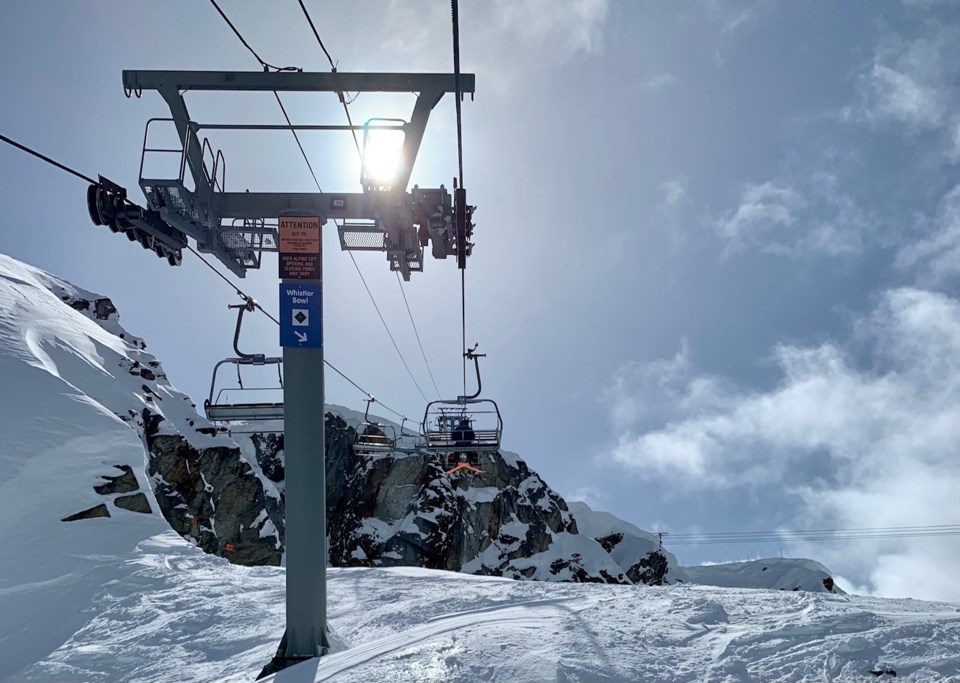Vail Resorts continued to rebound from a dismal 2020, with strong quarterly numbers across the board for the Colorado company—even as its largest ski resort, Whistler Blackcomb, was hampered by the ongoing COVID-19 pandemic and related travel restrictions.
For the third quarter ended April 30, 2021, the Broomfield-based company posted US$274.6 million in net income, an 80-per-cent jump compared to the same period last year. For comparison, Vail Resorts posted $292.1 million in net income for the third quarter of fiscal 2019, prior to the pandemic.
Total net revenue increased $195 million, or 28.1 per cent, to $889.1 million for the quarter.
Resort reported Earnings Before Interest, Taxes, Depreciation and Amortization was $462.2 million for the quarter, compared to $304.4 million for the same period last year, and $480.7 million for the third quarter of 2019.
Lift revenue, meanwhile, rose 54.1 per cent for the quarter, to $577.7 million, which the company primarily attributed to strong pass sales growth, as well as “improved non-pass visitation due to the Company operating for the full U.S. ski season in the current year,” with particularly strong demand at its Colorado and Utah resorts.
Excluding its 17 Peak Resorts, which were acquired by Vail Resorts in 2019, the company said total visitation to its American destination mountain resorts and regional ski areas for the quarter was only down three per cent compared to the same period in 2019. That’s even taking into account Whistler Blackcomb’s almost 60-per-cent decline in visitation when compared to Q3 2019, as the resort dealt with the continued closure of the Canadian border and the early shutdown of operations in March.
Pass sales through June 1 “increased very significantly” compared to sales in the same period last year, although there were no spring sales deadline in 2020 due to COVID-19. Even compared to Vail Resorts’ pre-pandemic year of 2019, however, sales for the quarter were up approximately 50 per cent in units and 33 per cent in sales dollars, the company said.
For the full selling season through Dec. 6, 2020, pass product sales were up roughly 20 per cent in units and 19 per cent in sales dollars when compared to the selling season ended Dec. 8, 2019.
“We are very pleased with the results for our season pass sales to date, with guests showing strong enthusiasm for the enhanced value proposition of our pass products, driven in part by the [20-per-cent] reduction in all pass prices for the upcoming season,” said Vail Resorts CEO Rob Katz in an earnings call Monday, June 7.
Katz went on to say that, while visitation and lift revenue figures improved throughout the quarter, “our ancillary lines of business continued to be more significantly and negatively impacted by COVID-19 related capacity constraints and limitations, particularly in food and beverage and ski school.”
Ski school revenue rose a modest $3.8 million, or five per cent, for the quarter, while retail and rental revenue rose $13.2 million, or 16.8 per cent. With capacity restrictions in place, dining revenue was way down, falling $16.3 million for the quarter, or 26.5 per cent.
Operating expenses increased $38.4 million, or 11.5 per cent, for the quarter, which was primarily due to operating for the full U.S. ski season this year.
As of April 30, Vail Resorts maintains $1.3 billion in cash on hand and $621 million of availability under its U.S. and Whistler Blackcomb revolving credit facilities.
To read the full earnings report, visit investors.vailresorts.com.






